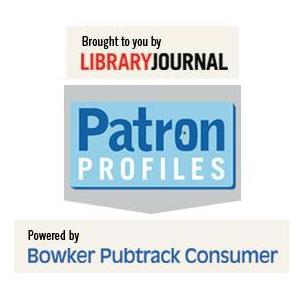 Readers are continuing to experiment with ebooks, and the pace at which they are adopting the format is increasing, according to the forthcoming edition of LJ‘s Fall 2012 Patron Profiles survey.
Readers are continuing to experiment with ebooks, and the pace at which they are adopting the format is increasing, according to the forthcoming edition of LJ‘s Fall 2012 Patron Profiles survey.
The Patron Profiles Fall 2012 report contains detailed data on ebook user demographics, device preference, preferred reading formats, library visitation trends and shifts in onsite use, patron book and ebook acquisition trends, opinions on the possibility of libraries selling ebooks, a section on self-publishing trends, and more.
Of the current ebook readers surveyed, 55 percent say they started reading ebooks during the past 12 months. And people who buy or borrow ebooks regularly now account for about 25 percent of readers. Demographically, this group tends to be older, urban, college educated, and middle class, while almost a quarter of frequent ebook readers have household incomes ranging from $50,000 to $75,000.
Awareness of ebooks in libraries continues to grow as well (though still not to every librarian’s satisfaction): 35 percent of library users now say that they know their library offers ebooks. With many patrons migrating toward the new format, this is a crucial time of transition, and libraries want to ensure a positive experience for ebook readers. This could be a problem, as publisher policies continue to make many popular titles unavailable.
Indeed, librarians continue to trade stories of eager patrons rebuffed by limited selection. These sad transactions are confirmed by 57 percent of respondents aware that their library offered ebooks who said that they had tried to check out an ebook, only to find that it wasn’t available. Twenty-two percent said that they had given up checking out an ebook because it was “too difficult.”
Publisher restrictions recognized
However, while librarians have long borne the brunt of patron frustration, awareness that several publishers still don’t allow libraries to purchase and lend ebooks may be growing. More than half of library users said that they knew that many publishers have these policies, with 29 percent describing themselves as “very aware” of these restrictions, and 24 percent describing themselves as “somewhat aware.”
Perhaps unsurprisingly, patrons who said they were aware of publisher restrictions did not have a very high opinion of those constraints. When asked to rate several ebook lending models—including hypothetical lending models, models that are currently in use, and models that employ embargo periods—a majority of respondents ranked only one as “reasonable.” There, 54 percent of respondents said that it would be reasonable for publishers to make ebook titles available to libraries one month after publication. By contrast, when the embargo period was extended to three months, only 40 percent said it would be reasonable, while 34 percent said only if there were no other way, and 26 percent said a three month wait would be totally unacceptable.
Patrons were almost evenly split on their opinion of one of the most common ebook lending models—the one book, one user model. The most significant opposition was reserved for defined lending models (such as HarperCollins’ 26 loan limit for ebooks), which 52 percent found totally unacceptable, models in which libraries pay a significant markup over retail for ebooks, which 53 percent found totally unacceptable, and models in which patrons can only download ebooks to a device while onsite at a branch, which 62 percent found totally unacceptable.
“As we can see, time lags in the availability are considered the most reasonable” by library patrons, the report notes.
Librarians who have been watching this tangle of business models emerge during the past 18 months will likely have more nuanced views. New bestsellers drive circulation, and embargo periods of three months or longer will likely quash demand. As for libraries already dealing with strained budgets, a loan cap on a normally-priced, current bestseller may be less onerous than a 300 percent markup over retail. Still, the survey makes clear that many patrons are not pleased with the way the Big Six publishers are handling ebooks when dealing with libraries.
Likewise, publishers who continue to refuse to sell to libraries at all are missing a significant marketing opportunity. In recent years, the number of brick-and-mortar bookstores in the U.S. dwindled to 2,400. Yet there are 16,700 public library outlets throughout the country. Libraries have always played an important role in introducing patrons to new authors and new genres; as bookstores decline, this role is becoming more prominent for many readers.
The avid and the holdouts
Even with the impressive growth of a young market, there is still a sizeable contingent of readers determined to hold out against the emerging format. When asked “what best expresses your opinion about reading books in ebook form?” 36 percent of respondents said they had no interest in ebooks and would “never” try reading one. Another 30 percent said that they had not yet tried ebooks, but might in the future. Of the 34% of respondents who had read ebooks, 26 percent said that they had enjoyed the experience, while 8 percent said explicitly that they did not.
Meanwhile, those who have embraced ebook borrowing are avid readers, averaging 30 books per year, according to survey responses. And as noted earlier, they also tend to have household incomes in the middle-class to upper middle-class range. For publishers that make better efforts to partner with the library industry, these characteristics could translate into sales.
According to Patron Profiles Fall 2012, 85 percent of ebook borrowers said that they had used their library to discover new writers or try out new genres. Thirty-seven percent said that they had purchased books that they had previously borrowed from the library, and 69 percent said that they had purchased unread books by authors whose other works were previously borrowed from the library.


